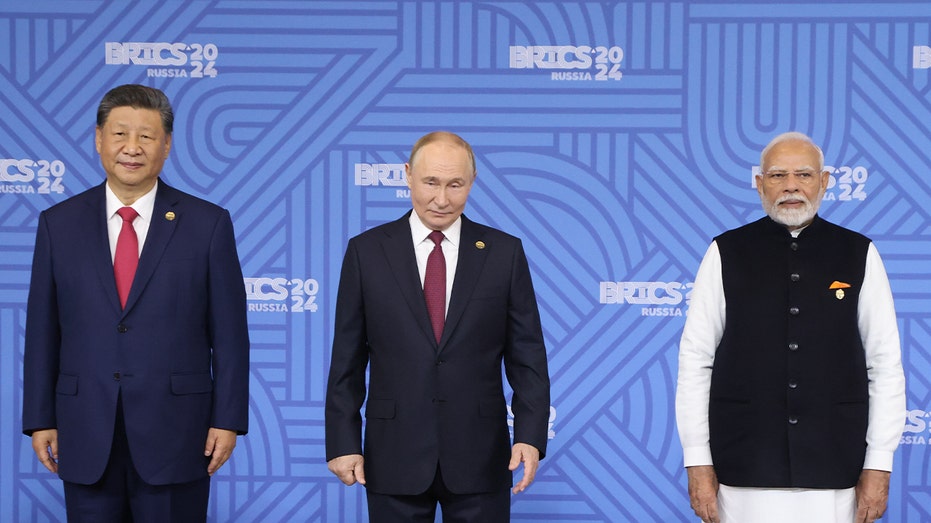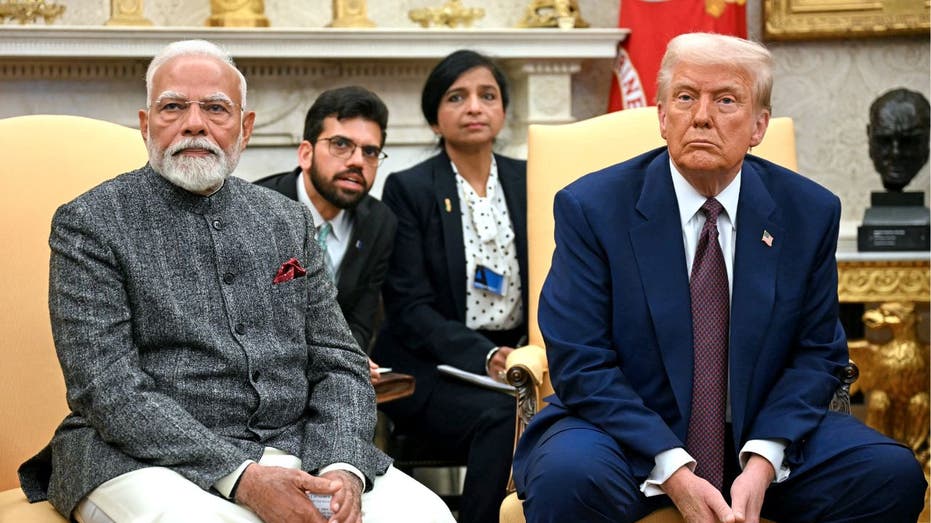

As President Donald Trump moves to further isolate Russia over its ongoing war in Ukraine, the Kremlin's trade relationships with China and India could soon come under scrutiny.
Trump has previously singled out the top buyers of Russian energy since the war began, accusing them of blunting the impact of Western sanctions and helping to sustain Russia’s economy.
China and India lead that list, with China importing an estimated $220 billion in Russian oil and India purchasing around $133 billion.

Xi Jinping, Vladimir Putin and Indian Prime Minister Narendra Modi at the 2024 BRICS Summit. (Photo by Maim ShipenKkov/Pool/AFP via Getty Images) / Getty Images)
On Monday, Trump said he would "substantially" raise tariffs on imported Indian goods, citing New Delhi’s continued purchase and resale of sanctioned Russian oil on the open market.
The hike in duties signals a widening rift between the U.S. and India, the world's fourth-largest economy.
Trump has also pointed to a nearly $46 billion trade deficit India ran with the U.S. last year, according to data complied by the U.S. Trade Representative.
Total trade between the two countries is valued at nearly $130 billion in 2024, with U.S. exports to India worth $41 billion and imports from India at $87 billion.

President Donald Trump speaks with the press as he meets with Indian Prime Minister Narendra Modi in the Oval Office of the White House in Washington, D.C., on February 13, 2025. (Jim Watson/AFP via Getty Images / Getty Images)
Meanwhile, the U.S. has agreed to a temporary trade truce with China, the world's second-largest economy.
Trump has raised tariffs on all Chinese goods several times this year, with the highest duty reaching 145% in April. The current U.S. levy on most Chinese imports stands at 30%. China has placed a 10% duty on American imports.
Last month, Treasury Secretary Scott Bessent identified China’s support for sanctioned oil as a central point of contention during trade talks with Beijing in Sweden.
Bessent previously led trade negotiations with the Chinese in Geneva in May, and a month later in London.

Treasury Secretary Scott Bessent looks on as President Donald Trump signs executive orders in the Oval Office of the White House on April 9, 2025, in Washington, DC. (Anna Moneymaker/Getty Images / Getty Images)
The U.S. and China have previously agreed to a trade truce to give negotiators more time to reach a deal. The terms were set to expire on Aug. 12.
Secretary of Commerce Howard Lutnick said on Thursday that Trump would likely extend the trade deadline by another 90 days.
Trump said during a July 22 bilateral meeting that he was considering meeting with Chinese President Xi Jinping in the "not-too-distant future."
